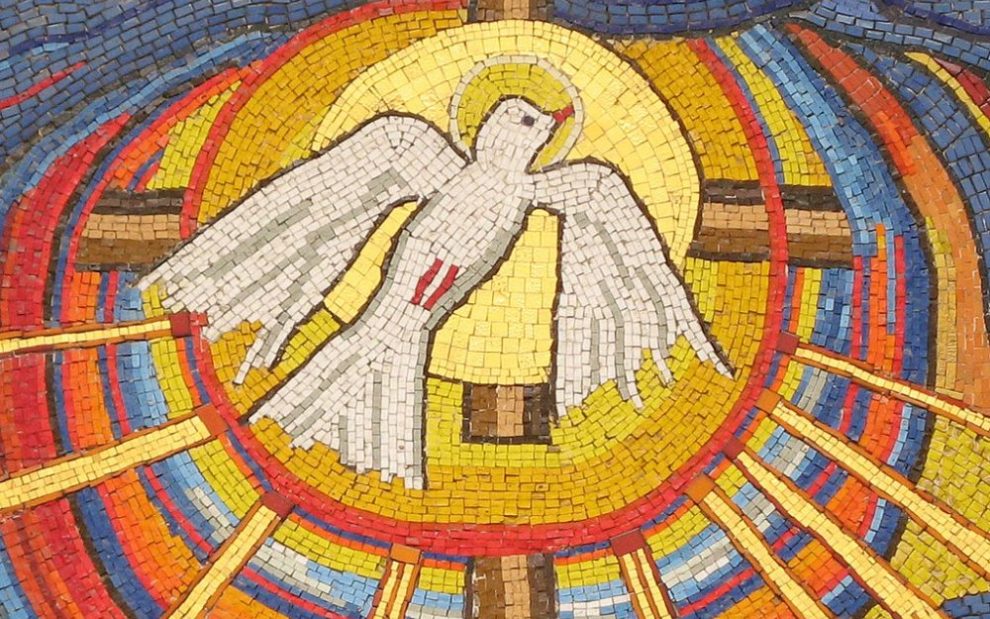I am a child of Korean immigrants. In 1975, my family immigrated to a small white city in Canada. Our neighbors knew little about Koreans except for through TV shows such as M*A*S*H. Some other school children even told me, “There is Chinese, and there is Japanese, but there is no such thing as Koreans.” So I lived in doubt about my own country and identity and would often question my mom, asking where Korea is and whether it is even real. Classmates called me names and racial slurs and sometimes did “eye pulls” to make fun of my small thin eyes. It wasn’t just kids doing this. Adults also belittled me and dehumanized me for not being white like them. It was a painful childhood, growing up with racism all around me.
These trends of hate and discrimination still carry on in white Christian society, including in its enforcement of an idea of God as a white male. White people and whiteness are accepted as good and normative; anyone who is not white is seen as somehow inferior. And this influences Christians’ engagement in justice work.
I grew up in the church and cherished and took to heart the things I learned in Sunday school. In both youth and adulthood, I embraced whatever my pastors taught me. But everything they taught pivoted around prayers, liturgies, scripture passages, sermons, and Bible studies that emphasized a white male God. It wasn’t until later in my adulthood that I began to question some of the things taught to me in church. Gradually, I came to realize that this image of a white male God shaped everything I did in the church, practiced at home, and how I viewed and approached the world.
My mother hung the famous Warner Sallman’s Head of Christ picture in our living room right above our couch. Since we lived in a small two-bedroom apartment, that print of Jesus’ face was the first thing you saw as you entered the apartment. That was the image that was ingrained in my head, in my faith, and in my understanding of God. My mother loved this picture and believed it to be the true likeness of Jesus. Whenever we moved, she packed this picture ever so carefully and automatically hung it above our couch in our new place. This image of a white Jesus was with me until I began to question the validity of a white Jesus and why it was perpetuated all over the world.
We use metaphors and images to help us understand who God is. This white male image of God is associated with kingship, colonial power, emperor, domination, fear, and intimidation towards women and people of color. The “good news” of Jesus spread throughout the world in part through colonialism and crusades and imperialist missionaries.
Once you begin to unpack your own beliefs that you have held since your childhood, you realize that the image of God that was taught in your churches really influences your faith journey and actions. How we view and portray God shapes our faith, theology, and Christian practice, not just in our interior lives but in our work for justice.
Our images of God are metaphors to help us understand who God is. So, as feminist theologian Mary Daly said, “if God is male, then the male is God.” Our society tends to elevate and revere white men. According to some Christians, women are supposed to obey these men, never questioning their actions of hate, discrimination, and subjugation. The image of a white male God was oftentimes connected with a terrifying aura of kingly power, with imperial gestures and threatening whiteness, which displaced me as a Korean immigrant girl trying to find her way in this white world.
As God is infinite, and we are finite, we cannot ever understand the fullness of God’s being. Therefore, we need to be open to the mystery of who God is, rather than limiting God in our liturgy, paintings, and stained-glass windows that present God exclusively as white and male.
Additionally, if we continue to view God as a white man, we will continue to accept white male dominance in our society. And this serves to further legitimize racism. It’s important to keep in mind that “white” is a created category of race. It has no biological or scientific foundation. So “whiteness” is a social construct, but it is one that has many tangible and destructive effects. Whiteness is a cultural space where political power and privilege are located. The agenda of whiteness is to keep people of color marginalized, oppressed, and subordinated. Whiteness maintains the status quo and reinforces it as it keeps white people at the top of the social hierarchy, where power, privilege, and wealth are concentrated.
Within Christianity, images of a white male God serve to legitimize whiteness. A conception of Jesus as white became part of the architecture of white supremacy. Therefore, if we are going to engage in social justice work which works towards gender justice, racial justice, economic justice, and climate justice, we need to dismantle these concepts of white Jesus and a white male God. Living out God’s commandment to love our neighbor will require new images and metaphors for God, that allow us to envision the divine apart from maleness and whiteness. Non-gendered and non-racialized images of God can help us work towards justice, equality, and love for everyone.
The Bible is full of images of warmth, love, mercy, and kindness that can guide us in our work for social justice and equality—not just for humanity, but for all of creation. That includes the pressing work of climate justice. When we focus on these, instead of on the images of an all-powerful, patriarchal, king-like divinity, this can empower us to love our neighbors and all creatures on Earth.
One core biblical image of empowerment is when the Spirit of God is depicted as a dove. The dove is often represented in the Bible as feminine. We see her see in the flood story and in the baptism story of Jesus. We invoke this image when we talk about Pentecost, though the dove doesn’t appear in that story. The image of a dove invokes a mother bird taking care of her young and protecting them from harm. When we emphasize this image of God, it can help us in our work fighting for equality for women.
Another rich biblical image is that of Hokmah in Hebrew scriptures and Sophia in the New Testament. These terms translate as “wisdom,” and these passages draw on feminine imagery to depict God’s wisdom. This is an image of God which can encourage women who feel powerless in a patriarchal world, where their ideas, thoughts, leadership and teachings are questioned, where they are routinely viewed and treated as less than men. And since more women than men attend church, drawing on this image can help empower women in the pews.
We need to elevate women and value women’s voices. We need to fight for equality among people of different ethnicities, gender, gender orientation, and other differences. As long as we keep upholding an image of a white male God, we reinforce white supremacy and patriarchy. This is why it’s so important for Christians to embrace images of the dove, the Spirit, and Hokmah.
We should be encouraging artists, theologians, pastors, and leaders to reimagine God in a way that will lead us to social justice work and inspire us to love everyone in the midst of our differences. These non-gendered and non-racialized images of God should be implemented in our hymns, stained glass windows, paintings, prayers, homilies, catechism, and Bible studies.
Doing this will empower us all to work towards equality and justice.
Grace Ji-Sun Kim explores this topic in depth in her new book, When God Became White: Dismantling Whiteness for a More Just Christianity (Intervarsity Press).
Image: Wikimedia Commons/Buchhändler (CC BY-SA 4.0)













Add comment